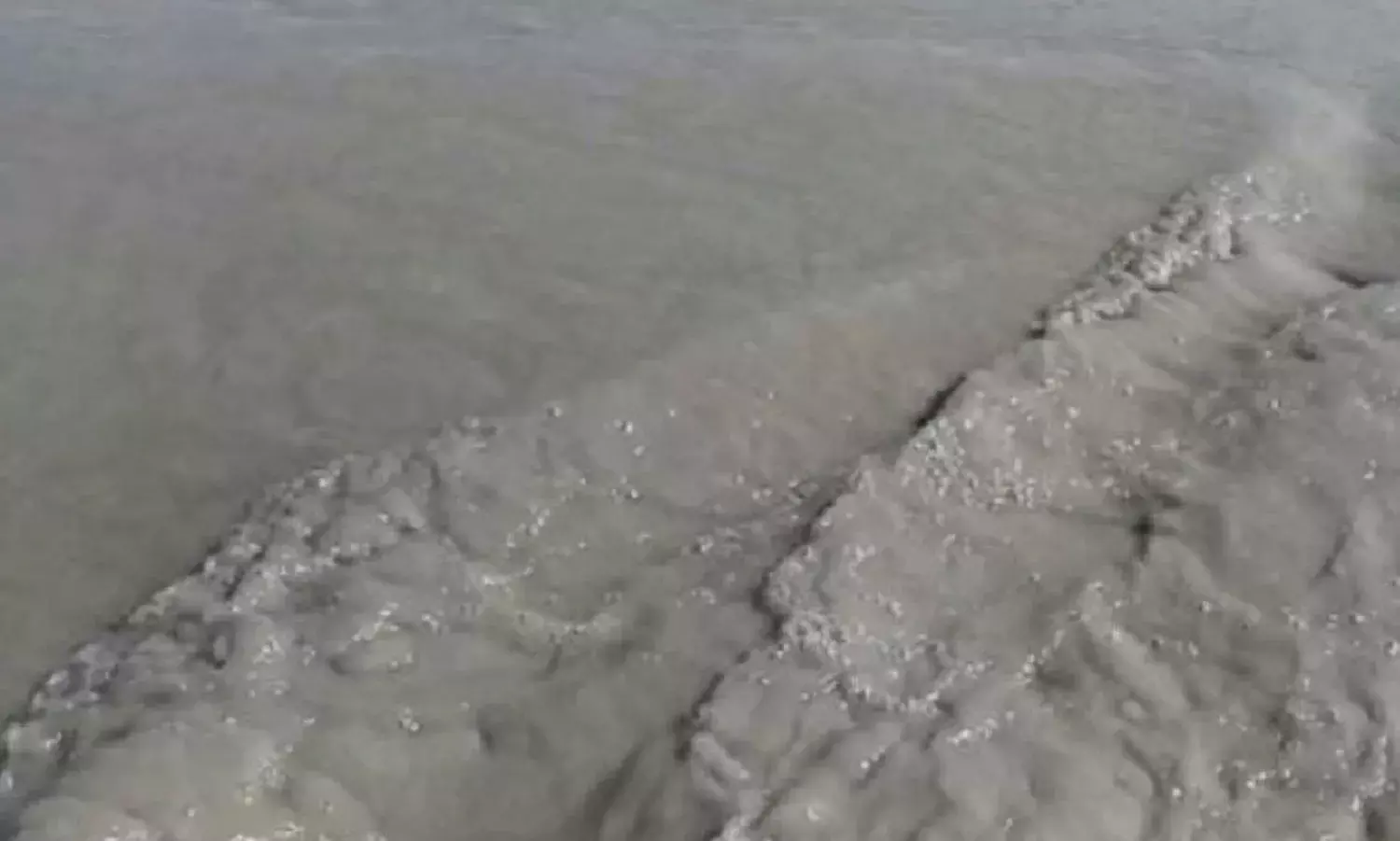Water Level Changes, Pollution in Siang River Raise Fears of 'China Hand'
Siang waters turned black
BASAR: For over a year now, the changing nature of the Siang river in Arunachal Pradesh has fuelled fears and alarm among large sections of people, many of whom are convinced that all is not well across the international border on the Chinese side.
In November last year, Ninong Ering, the Congress MP from Arunachal East, set alarm bells ringing when he reported on how the waters in the Siang river had turned unusually black, because of manmade construction activities from across the border in China.
The Yarlung Tsangpo flows into Arunachal Pradesh where it becomes the Siang and Dibang, before entering Assam where it is called the Brahmaputra.
Although Ering has been closely following developments in the Siang, even before he wrote to the Centre last year local residents living along the river banks had been reporting about the usually clear waters of the Siang turning black for two months. Tests on the Indian side found that the turbidity levels of the Siang's waters had reached to high levels unsuitable for human consumption.
After much coaxing, the Indian side raised the issue with the Chinese who initially denied any role in the changes to the Siang’s nature. Later, Chinese authorities said that a massive earthquake on their side near the course of the river had led to the change in the colour of the Siang.
Since then, anything that happens on the Siang that deviates from the ‘usual’ is viewed with the lens of doubt that the Chinese, as part of their attempt to consolidate and claim Arunachal Pradesh as their territory, may have a role to play.
Almost a year later in August when the Siang’s water levels began to rise despite the region receiving deficient rainfall, the first suspects were once again the Chinese (at least in the state).
Official advisories and warnings were issued by the local administration asking people living along the river’s bank and in low-laying areas to exercise caution.
By this year, however, Chinese authorities warned that heavy rainfall in China had led to an increase in the water levels of the Tsangpo. At one point, the water discharge from China had reached over 9,000 cusecs, or cubic metres per second.
Residents of at least one river island near the East Siang district headquarters, Pasighat, had to be rescued earlier this year when they were left stranded due to the rising water levels of the Siang.
More recently, Ering once again wrote to the Centre, this time calling for the signing of a ‘water treaty’ with the People’s Republic of China.
Writing to union external affairs minister Sushma Swaraj, and minister of state for water resources Arjun Ram Meghwal, Ering said that “India faces the threat from China of an impending water-war”.
Citing reports of China’s plans to build a “1,000-km long tunnel between the geologically fragile Tibetan region and Xinjiang province with the aim of supplying Tsangpo's water”, Ering said that “there is a greater need for diplomatic intervention”.
He wrote that the Centre “cannot ignore the threat China poses” and that that the two countries should sign a treaty which “limits them from tarnishing the ecological cap on the number of projects the two governments could carry out on the river”.
China already has an agreement with the Indian government, binding it to share hydrological data for rivers that flow into India from the Chinese side, but it has not been consistent on its part of the bargain.
Last year, the Chinese authorities did not share data about the Tsangpo/Siang for months before the water turned black.
Two months ago, chief minister Pema Khandu wrote to the Centre seeking to inform it about the “unprecedented situation” in the Siang river basin, and sought that an inter-ministerial team be sent to visit the affected areas. No official announcement has been made on that front till date.
Earlier this year, the All Arunachal Pradesh Students’ Union (AAPSU) also made a similar demand for the signing of a water treaty, after the water level of the Siang lowered before a sudden surge.
It was reported in local media that the water level of the Siang had dipped below normal this month but on October 20, it suddenly rose. There were also reports that residents found Chinese goods flowing in the Siang, including cooking gas cylinders. But what really had the AAPSU concerned was the discovery of barrels with Mandarin writing containing isocyanates, a highly reactive chemical widely used in the manufacture of flexible and rigid foams, fibres, and paint.
The influential students’ body has claimed that the chemical is an explosive generally used in big construction sites, “which clearly implies that construction activities are being carried out on the Siang on other side of the boundary”.
On October 24, several units of the AAPSU held a rally in Pasighat calling for the signing of a treaty with China that will make it more accountable for the way that the river is treated. A memorandum sent to the Centre called for the signing of a treaty with its neighbour.
Amidst such calls for a water treaty, the deputy commissioner of Upper Siang district, where the Tsangpo bends and becomes the Siang, issued an advisory asking people to be cautious of possible flash floods due to the landslide in China. The advisory stated that “there is also report of unprecedented decrease in volume of water” since Monday at Tuting.
The AAPSU’s general secretary, Tobom Dai, who is a native resident of Pasighat (one of the bigger towns along the Siang) said that a treaty is necessary to ensure accountability.





